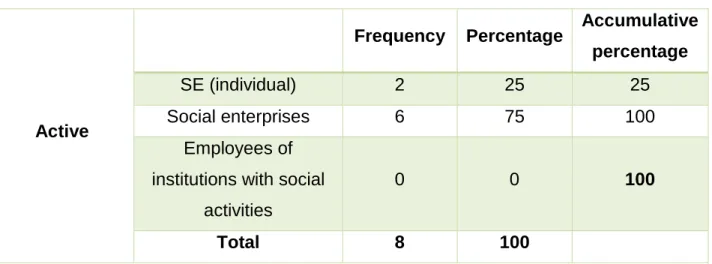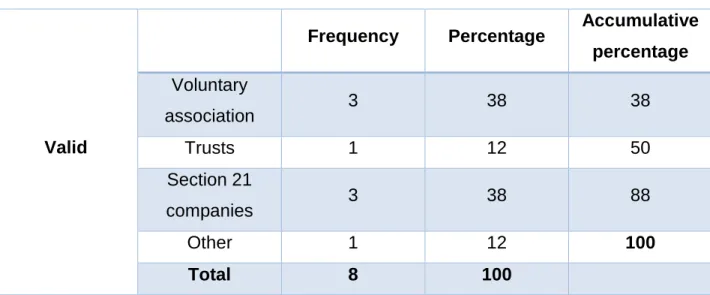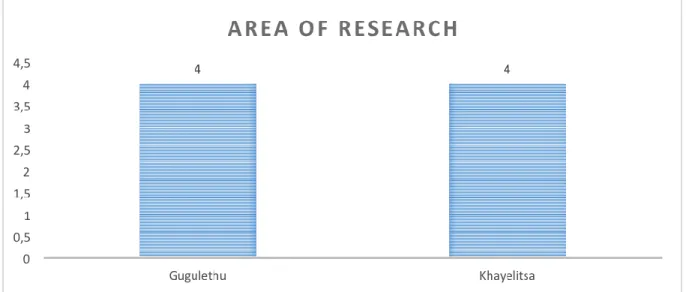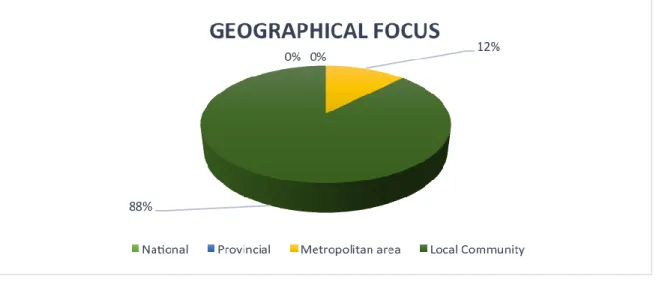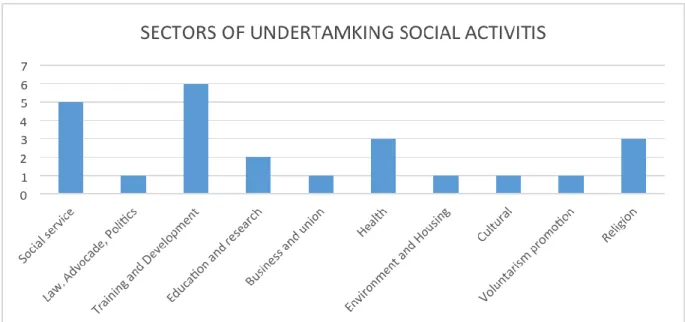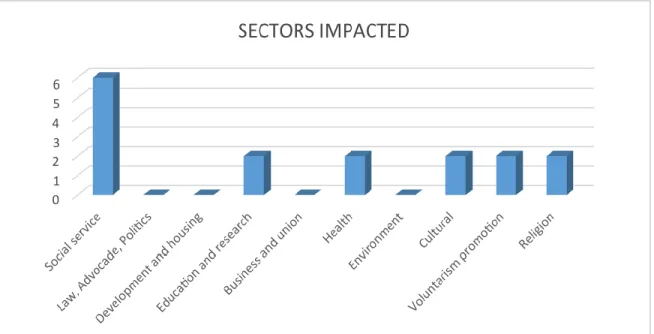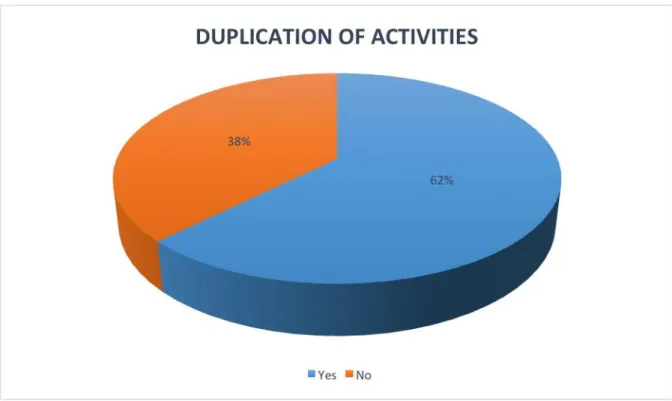Regardless of the positive performance of activities carried out by social entrepreneurs in addressing socio-economic issues in the Cape metropolitan area, their impact on community development remains unknown and perceived negatively by the communities. Social entrepreneurs should keep in mind that community development should involve those who are identified as beneficiaries and trapped in the socio-economic problem.
INTRODUCTION
- Introduction
- Overview
- Background to the research problem
- Statement of research problem
- Research objectives
- Research questions
- Preliminary literature review
- Social organisation
- Social entrepreneur
- Some organisations in Cape Metropolitan area known for social
- Conceptualising of social entrepreneurship
- Dilemmas of social entrepreneurship
- Social innovation of social entrepreneurship
- Social value creation of social entrepreneurship
- The social entrepreneur
- The social entrepreneurship organisation
- Market orientation
- Research design and methodology
- Delineation of the research
- Significance of the research
- Outline of the dissertation structure
The unclear impact on the development of communities in the Cape Metropolitan area has largely contributed to the negative view of the SEhip field and their potential to alleviate socio-economic problems. Bacq and Janssen define it as "the process of identifying, evaluating and exploiting opportunities aimed at creating social value through commercial market-based activities and the use of a wide range of capital and resources", while Choi and Majumdar conceptualize it as: "a collection of concepts pointed to a representation of the combined quality of certain sub-concepts".
LITERATURE REVIEW - OVERVIEW OF RECENT AND PAST
Introduction
Meaning of ‘entrepreneur’
Around the nineteenth century, the French economist, Jean Baptiste, explained the meaning of 'entrepreneur' by writing: Entrepreneurs change the flow of resources from an area of lower or higher production. Defining the term "entrepreneur" requires a closer look at what characterizes the activity system of an entrepreneur (Filion.
Evolution of entrepreneurship
- Entrepreneurial function, initiative, behaviour and spirit
Based on Petrin's (1994: n.p.) thoughts, Mugobo and Ukpere conclude that the concept of entrepreneurship is important for the wealth of the economy nowadays. Cuervo, Ribeiro and Roig (2007:3) explain that the concept of entrepreneurship usually originates from the discussion of the study of entrepreneurial factors, which the author outlines as: entrepreneurial function, entrepreneurial initiative, entrepreneurial behavior and entrepreneurial spirit.
Social entrepreneurship
- Conceptualising social entrepreneurship
- Dilemmas of social entrepreneurship
- Social innovation of social entrepreneurship
- Social value creation of social entrepreneurship
- Role of social entrepreneurship
- Social entrepreneurial organisations in the Cape Metropolitan area
- Individuals social entrepreneurs in the Cape Metropolitan area
Understanding the social innovation process therefore lies in the meaning given to the concept (Lettice & Parekh. FAMSA was established in 1998 as a non-profit organization operating in Khayelitsha within the advisory sector.
Social organisations
Siphiwo Rengqe is a recognized SE and winner of the Department of Economic Development and Tourism (DEDAT) competition, Siphiwo is a person with a social purpose who developed the White Walls Project, which aims to sell advertising space on newly constructed border walls. The project alleviates the problem of privacy and security vis-à-vis houses built along main roads without boundary walls, Siphiwo started the initiative that innovates business by enabling the White Walls project to tackle the cost of building external boundary walls by selling advertising space strategically located at key transport intersections.
Social entrepreneurs
- Market orientation
Impact of social entrepreneurship on community development
- Community development
- Social and people-centred community development
- Economic Development
- Cultural condition
31 the author states that mobilizing the population to alleviate their problems takes place in cooperation, with group capacity building as a technique. As an unpacked word in a range of societal disciplines, 'community development' is defined by the United Nations as a procedure in which skill, ability and effort of participants from non-governmental and governmental units are combined to improve the course of economic, social and cultural conditions of communities, integrate them and enable them to contribute to national progress (United Nations report.
Social enterprises impact assessment
- Impact in other regions
- Gap in the Cape Metropolitan area
According to the author, there are many social impact assessments that are explored in the social consequences of development. For the purpose of this research, two of the nine surveys will be used to support understanding of the impact of social enterprises in the Cape Metropolitan area.
Summary
Despite the success stories around the Cape Peninsula, Malunga et al. 2013:23) shows that there are still many issues in the Cape Metropolitan area that need to be addressed. For the author, issues such as health, education, employment and housing in the deprived areas of Cape Town still need SEhip action to seize opportunities and promote change. 2014.24) propose an empirical study of the impact of SE in CD. As the SE impact on CD around the Cape Metropolitan area remains mostly unclear and not well received by local communities, this study investigates the impact of SE on CD in the area.
RESEARCH DESIGN AND METHODOLOGY
- Introduction
- Research design and methodology
- Philosophical assumption
- Interpretivism approach
- Mixed method research approach
- Quantitative research
- Qualitative research
- Research site and population type selection
- Research site
- Sample size
- Sampling techniques
- Data collection insttuments
- Interview
- Questionnaire
- Data analysis
- Quantitative data
- Validity, reliability and triangulation
- Delineation
- The position of the researcher
- Ethical considerations
- Summary
This informal settlement area is home to almost 10% of the population in the Cape Metropolis, which calls home to almost 27% of black Africans in the area. Gugulethu is known as one of the fastest growing townships in the Cape Metropolitan area, with around 40% of the population living in informal shacks. 45 closed questions contain the possibility to determine the answers that individuals give impulsively and to investigate deviant answers of the individual to the closed question.
Using a consistent application of research methodologies as outlined in 3.3 to 3.5.4 helped to limit any bias that might have been introduced by the researchers' point of view. The questionnaire was limited to residents, SOs and sole proprietors of the Cape Metropolitan Area (Khayelitsha and Gugulethu) regarding the impact of SE on.

DATA ANALYSIS AND RESULTS
Introduction
Part one: SE or organisation involved in the research
- Gender
- Status
- Legal structure of the work is organised: the form and years of activities
- Geographical focus
- The purpose of social activities in Khayelitsha and Gugulethu
- Groups of beneficiaries
- Services evaluation
- Measurement of outcomes
- Sectors that yield more impact
- The evaluation to increase the quality and quantity of existing
- Duplication of activities
- Monitoring the outcome of activities
- Years activities start impacting on beneficiary
- Specific impacts activities have had on beneficiary
- Difference brought through social activities
- Impact measurement
- The way activities trigger development in the community
- Improve development in the community
- Form of support needed
- Rate of impact
- Sustainability of impact
In terms of structure, among the respondents there were at most n=5 (62%) non-governmental organizations (NGOs), and n=3 (38%) non-profit sector organizations (NPS). The result shows that among the respondents, a wide range of their services were received by "People in the community" and "People with barriers to employment", representing n=6 (23%). The results below are responses from participants responding to how their activities trigger development in the community in which they operate.
Of the respondents, n=5 (62%) said that their activities trigger development in the community they operate by making specialists through education and family counseling. The overall respondents n=8 (100%) indicated that they need more funding as support to continue development in the community they operate.
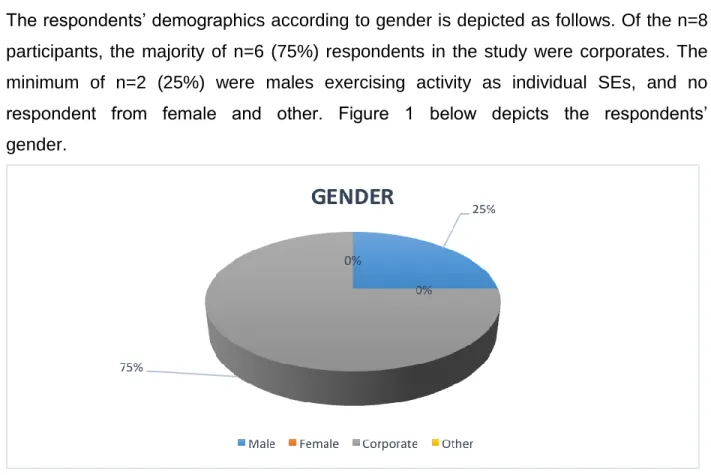
Part two: Populations involved in the research
- Gender
- Status
- Occupation
- Participant age
- Area participants do live
- Duration of living in the area
- The respondents were given a brief introduction of SOs and SEs and then
- Role SEs play in area regarding CD
- The area SEs have aimed to do in area
- The activities and initiatives in the area the research was conducted
- The proposed CD activities of SEs on meeting the demand of Khayelitsha
- SEs involving the local people in the CD plan process
- Presentation of any CD plan to continue liaison with local people
- Social activities implemented to develop the community
- What the impact population has noted in the area
- The number of SEs’ activities’ outcome triggering CD?
- SOs monitoring their outcome mentioned
- Sustainability of SEs’ outcomes
- The outcomes of activities alleviating the issue respondents think the
- Specific measures proposed to protect existing outcomes and liaison
- CD: the use of local people by SEs
- Perception on SEs in terms of poverty alleviation, sustainable CD and
- Supporting the vision of SEs in practice
- Specific measures to ensure that potential impact on CD are used
- Suggestion to SEs to do differently
An analysis of the basic objectives of SEs in the area where the survey was conducted (Khayelitsha and Gugulethu) for CD shows that n=15 (30%) of the respondents believe that SEs promote local development. The majority of respondents n = 31 (62%) stated that the proposed CD activities set by the SE usually meet the demand of their area. Of the respondents, only n=31 (62%) answered that SOs do not present any CD plan to continue contacts with the local population.
The most common result on whether SE activities were well implemented for community development in the survey area was “no”, with n = 34 (68%). Some activities, such as the “food package” enjoyed by communities for four (4) years, have produced sustainable results in their area.
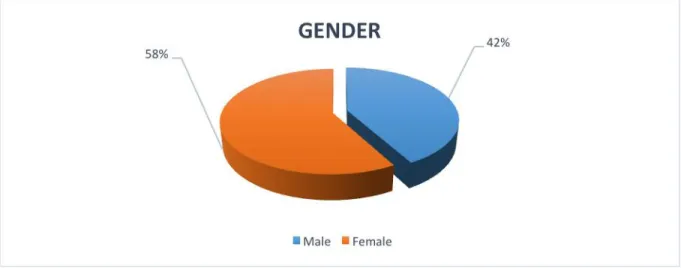
Results for research interviews
- General questions about SEs for inhabitants
- General questions about social entrepreneurship (for SEs)
- Discussion of results from interviews
They must bring everything close to the community, especially programs that will develop the community and internships must be implemented in their communities not in the CBD. Of the respondents, the majority of three (3) indicated that one should recognize and support SEs, as they represent efforts driven to make a difference in the community. The researcher asked SEs about how they planned to communicate the project to the community.
Word of mouth has been a common method of communicating our projects to the community. We have also recently incorporated social media to keep the community informed about what we are doing.
Research findings
- Part one: Findings for SEs or organisations involved in the research
- Part two: Findings for residents involved in the research
It was found that an average of five (5) activities were carried out in addition to the existing programmes. To improve community development, SEs were found to improve community development in Khayelitsha and Gugulethu by having more support workers reach more people. It was found that for SEs to improve CD, they needed support to carry out their activities.
It was found that the people of Khayelitsha and Gugulethu understood the presence of SEs despite their different sizes and profiles in the area. It was found that the population believed that it is clear that CD requires SEs to involve local people in the process.
Summary
In terms of what the population wants differently from SOs, the population suggested that SOs should focus more on drugs because it is causing more problems for younger generations and young people to help them with scholarship to go to school. In addition, it was pointed out by the population that NSs should advertise the development approach to the communities instead of waiting for the population to come to them, also continue to do what they are busy doing but should keep them communities along with more. seminars, bringing communities closer to agriculture and culture.
CONCLUSION AND RECOMMENDATIONS
Introduction
Summary of the study
In this chapter, the results of the distributed questionnaires and interviews with the people of communities in the townships of Gugulethu and Khayelitsha in the Cape Metropolitan region are presented. It is clear from the data collected from the questionnaires that SOs are those entities that focus more on underserved areas by identifying the needs of the specific segmented society to create a common interest. Chapter five attempts to answer the research questions mentioned earlier in the study.
The chapter closes with possible recommendations and a conclusion of the study is provided.
Limitations of the study
Addressing the research questions
- What impact do SEs have on communities?
- How can SEhip improve development in communities?
SEs have brought about changes in the community by doing what is necessary to reduce poverty and also by intensively raising awareness among children to protect them from drugs. The most important answer to this question was according to the Khayelitsha and Gugulethu majority, who emphasized that the CD requires the SE to involve local people in the process, as noted above. Involving local residents in CD efforts is important due to the fact that local people are the ones who know what their community needs.
Hiring more support staff to reach more people and also increasing efforts in marketing and networking with stakeholders is evident in improving community development. Physical support is important as they engage in the field and throughout the activities process.
Conclusion
SEs needed this support to carry out their activities and escalate development around deprived areas such as Khayelitsha and Gugulethu. There is no doubt that SEs specifically affected the community of Khayelitsha and Gugulethu. In the case of Khayelitsha and Gugulethu, SEs apparently need support such as more money, donations, more volunteers and equipment to be active in the development of the communities they serve.
The survey found that certain activities to support CD were considered as the people of Khayelitsha and Gugulethu acknowledged that SE. In the case of Khayelitsha and Gugulethu, the situation appears to be different as the two communities are disconnected from the process.
Recommendations
- Further research
The Multiple Faces of Social Entrepreneurship: An Overview of Definition Issues by Geographical and Thematic Criteria. Social Entrepreneurship - Individuals with vision have unlimited potential to alleviate poverty: The UnLtd South Africa model. The impact of social entrepreneurs on community development in the Cape Metropolitan Area, South Africa.
Please indicate the extent of the impact your organization makes on community development in the relevant sector(s). I would like to invite you to participate in my research study, which concerns an understanding of how social entrepreneurship affects community development; and to determine the importance of social impact related to the contribution to community development essential.
